| |
|
 |
|
 |
Cup with Fish-Shaped Handles
Golden Horde (Southern Russia), late 13th–14th
century
Gold sheet, handles worked in repoussé and engraved
State Hermitage Museum, Saint Petersburg (SAR-1613)
cat. 139
[click on top image for full object view] |
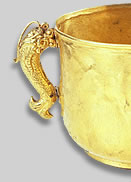 |
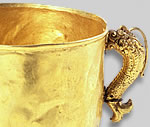 |
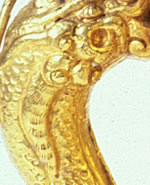 |
 |
 |
This spectacular gold cup was excavated
at the site of New Saray (Saray al-Jadid) along the Volga River.
New Saray was the second capital of the Golden Horde, the branch
of the Mongol dynasty whose empire encompassed parts of the Caucasus,
the Crimea, Siberia, and the vast steppe region north of the Caspian
Sea.
|
|
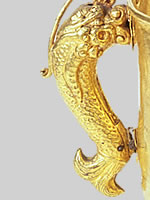 |
 |
Dragon- and fish-shaped handles were common
elements in the repertoire of the Chinese-influenced Mongols of the
Golden Horde, representing symbols of good omen, especially for drinking
vessels.
|
|
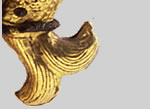 |
 |
| Here, the contrast between the elaborate,
sculptural repoussé handles and the plain gold surface of
the cup make for a remarkable work of art that has miraculously
survived destruction or melting down for reuse.
|
|
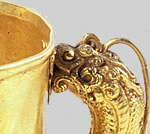 |
 |
 |
 |
 |
 |
|
|
|


